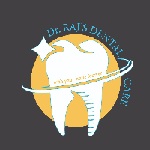When decay is present within a tooth, lasers are used to remove it in order to prepare the enamel for filling. Lasers are used to treat gum disease and remove bacteria during root canals. It can be used to remove a little piece of tissue (called a biopsy) for the purpose of examining it for cancer. Furthermore, lasers can be used to remove lesions in the mouth, as well as relieve the pain of canker sores. Lasers are effective for getting white teeth too.
Laser therapy is less painful and more precise than traditional surgery equipment. The damage caused to tissues decreases as no cuts have to be made to remove oral growth. Various types of growth can occur in the mouth, including nerves, bones, connective tissues, and muscle. Usually, growths are found on the lips, the tongue, the mouth floor, and the soft palate. To remove this, laser therapy is effective.
Oral irritations like ulcers, canker sores, and cold sores can be treated with laser therapy. The treatment takes less time and heals the ulcer faster. Earlier, it used to take around 14 days to heal but with laser therapy, the healing time has reduced to around 3 days. It provides instant relief from the pain and delay the reoccurrence of the ulcers.
In modern dentistry, lasers can be used to open the root canal of a tooth, remove diseased tissue, disinfect, clean, shape, and fill it. A laser can be used to aid in root canal disinfection effectively. Using lasers, the pulp and organic particles from a root canal can be removed, and even the walls of the root canal can be modified (shaped and cleaned). After the root canal has been prepared and sealed, the laser can be used to soften and mold the sealant for the root canal system.
As a method of treating gum disease, gum laser treatment uses laser technology to remove infected gum tissue around the roots of your teeth creating an even gum line. As the damaged tissue is removed and its root exposed, the scaling process is initiated. This involves removing tartar and plaque from around your root and under your gum line. Afterward, the dentist smoothes out the root to remove any rough spots that could attract bacteria. This is a great alternative to conventional gum surgery since there is no stitching or cutting involved and the patient feels less discomfort.
To treat the infected wisdom tooth, the dentist may prescribe antibiotics to remove the infection. After the infection has been cleared up, the dentist may repair or extract the tooth. An overgrowth of gum tissue around the teeth is known as gingival hyperplasia. Some causes of this condition can be attributed to poor oral hygiene or as a side effect of certain medications. To treat overgrowth of gums, the dentist may perform the following procedures:
- Laser excision: When gum tissue is inflamed, a periodontist will use lasers to remove it. When the gums are removed, the periodontist will scrape off the plaque that has built up around your teeth’s roots.
- Periodontal flap surgery: By using this procedure, the gums are separated from the teeth. Temporarily folding the gums back allows the periodontist to remove plaque or tartar and clean any inflamed tissue.
- Gingivectomy: Gingivectomy refers to the surgical removal of a portion of gum tissue around your teeth. In addition to trimming and removing diseased gums, the periodontist will stitch up the remaining gums.
Your teeth may look longer than normal and this may be caused due to some activities like the way you brush teeth, or smoking. In Gum Contouring, the dentist treats your shrinking gum line to give your teeth a shorter appearance and keep gums in a straight line. Gum contouring is done by laser which is bloodless and painless and recovers quickly than traditional gum procedures.
Crown lengthening is the opposite of gum contouring. If you have shorter teeth and want to improve your appearance, crown lengthening is the treatment for you. The gum tissues on the base of your teeth are removed by laser and modify your gums.
